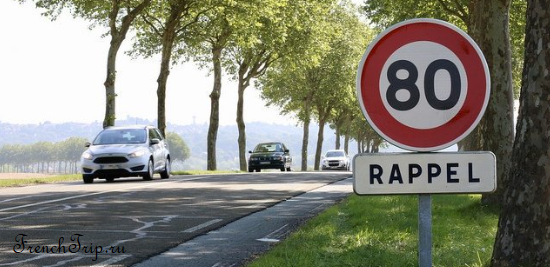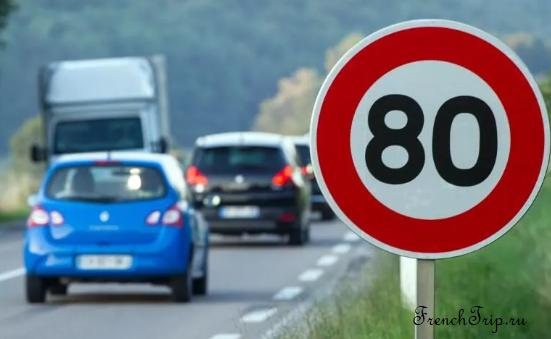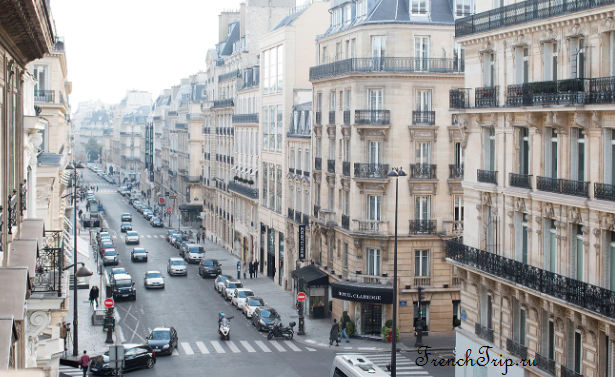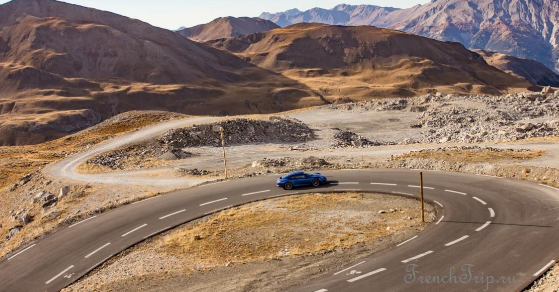Traffic Rules in France
The traffic rules in France is similar to the one in Europe. Speeding and parking in unauthorized places are strictly penalized. Since early 2012, the punishment for using a mobile phone while driving has been intensified, especially for watching videos. Driving on the emergency lane (along the highway) incurs a fine of €135.

Speed Limits in France
- On highways: the maximum allowed speed is 130 km/h in good weather and 110 km/h in rain. If visibility does not exceed 50 meters (dense fog or heavy rain), the maximum permitted speed is 50 km/h.
- In many sections of the French national road network, the permitted speed is reduced to 90 or 110 km/h to reduce environmental pollution. These zones are clearly marked with speed limit signs.
- Highways: 110 km/h and 100 km/h in rain.
- On dual carriageways: 110 km/h and 100 km/h in rain.
- Regional roads: 80 km/h In towns: 50 km/h
- In residential areas of towns, there may be zones with a 30 km/h speed limit.
Note: The speed limit in the Alpes-Maritimes (06) is 110 km/h on the highway (A8).
Entry into towns is not always accompanied by a speed limit sign. The name of the town at its border (dark blue text on a light background) AUTOMATICALLY indicates the town boundary and the need to reduce speed.

Speed control is carried out by automatic cameras with radars, some of which are well visible and marked, while others may be hidden in gendarmerie cars, with their location changing.
On highways, a speed limit excess of up to 10 km/h is allowed. In cities, fines can be imposed for exceeding the speed limit by just a couple of km/h.

Roads in France
Highways are marked with the letter A. Routes Nationales are marked with the letters N or RN and are major roads without tolls. Departmental roads (Départementales), marked with the letter D, are small country roads.
The motorway system is tolled, and several companies own the toll collection rights for specific regions. Autoroutes France is a portal for all French toll companies. The toll cost is indicated at the entrance. Most tolls can be paid in cash, by credit card (with a chip and PIN), or by subscription to the respective toll company.
Special conditions
Special rules apply when driving in Paris, Lyon-Villeurbanne, Lille, Strasbourg, Grenoble, and Toulouse.
Certain areas of these cities are low-emission zones (zone à circulation restreinte or ZCR). Anyone wishing to drive in the zones established by local municipalities must display a special pollution rating sticker on their windshield. This is the Crit’Air vignette. Vehicles that produce the most pollution (considered “unclassified”) will be banned in these zones from 08:00 to 20:00, Monday to Friday.
All vehicles, including those not registered in France and with a “Disabled” sticker, must have a Crit’Air vignette. An online simulator is available to calculate the pollution level produced by your vehicle (in French).
The Crit’Air vignette can be purchased online on the French government website. The cost is €3.62, including postage, and delivery of the vignette takes up to 30 days.
The Crit’Air vignette must be placed inside the car’s windshield. Non-French drivers can already order the sticker through the Certificat Air website. Once purchased, the Crit’Air is valid as long as it remains applicable.
The system is also being implemented in other regions and cities.

Road conditions and news
Bison Futé (website in English) is the official French national road and traffic information center.
Real-time data on accidents, road closures, or other unforeseen issues for all areas of France.

Fuel: Petrol and Diesel
All gas stations sell diesel fuel (gazole) and unleaded petrol (essence; sans plomb) with octane ratings of 95 and 98. Many also supply autogas/liquefied petroleum gas (GPL). Some stations may also offer unleaded petrol SP95-E10 (Super Carburant SP95-E10), which is a blend of 95-octane unleaded petrol and 10% ethanol. This product may not be compatible with all petrol-powered vehicles. Drivers are strongly advised to consult their vehicle’s owner’s manual or the vehicle manufacturer to determine if this product is suitable for use.
Many gas stations have automated pumps where drivers can pay by credit card (some only work with a card).
Note: Credit cards that do not have a “chip and PIN” format (and instead require a signature) do not work at automated gas stations in France.
Documents and Accessories
You must have your ID, driving license. You may be asked for the “Carte grise” (“grey card”) — which is the vehicle registration certificate.
You also need to arrange car insurance.
Since March 1, 2013, drivers in France are required to carry a breathalyzer. It can be purchased at many gas stations for a symbolic price of €1. However, there is no penalty for not having a breathalyzer. The maximum permissible blood alcohol content is 0.5 per mille.
A warning triangle — in case of an accident.
A reflective vest — must be kept in the car, fluorescent yellow or orange. The vest must be INSIDE the car, not in the trunk, so that it can be put on immediately if the driver needs to leave the stopped car, especially on the highway.
Related links
- France by car
- Traffic Rules in France
- Toll roads in France
- Fines for traffic violations in France
- Parking in France
- How to Travel Cheaper in France
Archives
Calendar
| M | T | W | T | F | S | S |
|---|---|---|---|---|---|---|
| 1 | 2 | 3 | 4 | 5 | 6 | 7 |
| 8 | 9 | 10 | 11 | 12 | 13 | 14 |
| 15 | 16 | 17 | 18 | 19 | 20 | 21 |
| 22 | 23 | 24 | 25 | 26 | 27 | 28 |
| 29 | 30 | 31 | ||||